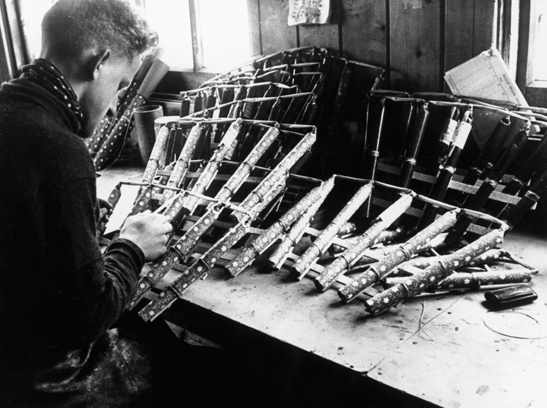I can deduce from the incessant bangs and fizzles, and the scent of fire and sulphur filling the air since last week, that many a Bonfire Night celebration has been enjoyed across West Yorkshire this year. Even as I type, the window behind me is lit up with the bursts of kamuros, spiders, time rain and peonies (all legitimate names of firework effects, I promise) enchanting young souls, and evoking the customary ‘oohs’ and ‘aahs’ which have certainly accompanied every firework display I’ve ever witnessed.
You’re no doubt fully aware that Bonfire Night in Britain is associated with Guy Fawkes Night. The tradition dates back to 1605, when people lit bonfires around London to celebrate the fact that the Gunpowder Plot had failed, and that King James I had not lost his life. It came into being as an annual night of fire, explosions and revelry with introduction of the Observance of 5th November Act.
Knowing that Bonfire/Guy Fawkes Night in Britain is such a long-held tradition, there was no doubt in my mind that our collection would be chock-a-block with photographs of people indulging in a hefty dose of annual firework festivity—and I was not disappointed.
We care for one of the best photography collections in the world; it is incredibly diverse, incorporating both aesthetic and technical developments from the earliest photographers to the present day, world firsts, and key images by the most influential photographers of our time. But one of the things I love most about the photographs which make up the collection is their power to inform, to evidence the knowledge we have about our past, and to paint a picture of, or tell interesting stories about the lives of ordinary people.
This photograph was taken by Edgar Tarry Adams (1852–1926), a wealthy and dedicated amateur photographer. It depicts a group of brewery workers’ children in Halstead, Essex, leading a pony and cart carrying an effigy, probably of Guy Fawkes.

The annual Guy Fawkes procession in Halstead began at the Brewery owned by Adams and was a part of the traditions of the village. Adams was a figure of authority and played a prominent role in local affairs. His interests were many and varied; an accomplished amateur painter and musician, he was also a captain of the local volunteer Fire Brigade and a Lieutenant in the RNVR.
Adams first took up photography in the 1880s and carried on taking photographs until after World War I, creating a fascinating social record of his family, friends and interests.
This photograph is of Braggs Guy, an effigy representing Guy Fawkes due to be burned on a bonfire on Guy Fawkes Day, in Trinity Street, Halstead, Essex.

Either the celebrations had not taken place the night before, or the Guy escaped without too much damage as the photograph was taken the day after Bonfire Night.

The caption on the back of the photograph above reads:
With ‘atomic’ ideas and great expectations of plenty of big bangs on the 5th of November, south-east Londoner John Astin leaves a toy shop in Tower Bridge Road after investing his saved up pocket money on some fun
The children in this photograph from 1944 are celebrating Guy Fawkes day with a politically significant guy, labelled ‘HITLER’S PEACE ENVOY’. The other sign, ‘BERMONDSEY BUZBOMBER KIDS’, refers to the Buzz Bombs dropped on London during World War II. Buzz Bombs were another name for Doodlebugs, the German V1 flying bombs.

During the War, because of the blackout at night, children could not have bonfires and fireworks on 5 November. However they still collected money for the Guy, and some families had parties with toffee apples and parkin to celebrate the occasion.

The photographic archive of the Daily Herald newspaper is a record of local, national and international events from 1911 to the mid-1960s, so I was not at all surprised to find a series of images taken at fireworks factories from 1933 to 1937.

As Bonfire Night came around, a trip to the local fireworks factory would have made a great topical news story. In this photograph from 1933, factory workers at Brocks pose with a life-size Guy Fawkes character. The women are displaying giant rockets and catherine wheels produced at the factory, and the Guy is packed with fireworks.

The workforce at Brocks were mostly women, employed seasonally. Those who worked with gunpowder wore black boilersuits, while packers wore white overalls. Founded in London in 1725, Brocks produced rockets, roman candles and special set piece fireworks for displays. They moved to a 200-acre site in Cheam in 1901, and continued manufacturing there until 1934. At one time the largest fireworks factory in the world, Brocks’ many small workshops and stores were dispersed across the site to minimise the danger of accidental explosions.



Fireworks are not just for Guy Fawkes Night—these women are carrying giant fireworks made for Christmas at Brocks.


And it wasn’t just the factory workers at Brocks getting their faces in the paper when Bonfire Night rolled around. The photograph below was taken at the Standard Firework Company factory, down the road in Huddersfield.

Looking through the Science and Society Picture Library, I only spotted a couple of photographs of Bonfire Night in all its illuminating glory: an eerie image circa 1930s, with Sydney Harbour Bridge in the background, and a Surrey crowd enjoying Guy Fawkes Night in 1931—look at the size of that bonfire!


Did you capture any spectacular photographs of exploding fireworks, burning bonfires or wide-eyed youngsters this year?